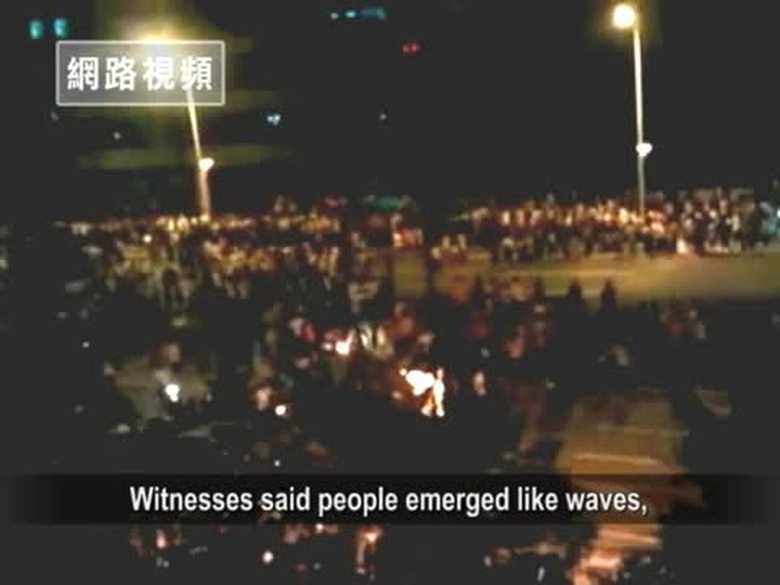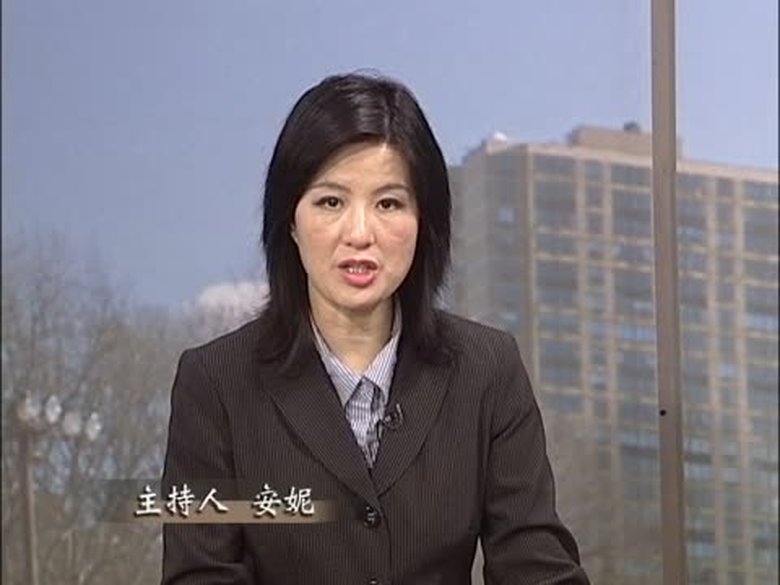【新唐人2011年6月14日訊】中國和越南最近有關南海主權爭議持續升溫,越南13號開始在有爭議的海域島嶼附近舉行系列實彈軍演。而菲律賓政府把爭議的南海海域改名為西菲律賓海。中國海南省傳出有大批中方軍艦、潛艇集結。國際高度關注南海局勢,擔憂各國隨時擦槍走火。
週一當地時間早上8點,越南的演習在廣南省翁島拉開帷幕。《美國之音》報導說,實彈炮擊演習持續了大約四個小時。越南海軍說,這次實彈演習包括火炮和其他武器,但不會發射導彈。
因為越南近期與中國爭端不斷,因此這次軍演惹來各方關注。分析認為,越南這次演習,是希望在南沙問題上阻遏中國。
越南舉行軍演的海域距離越南海岸40公里,這個領域被認為有豐富的石油儲藏。
多年來,越南、菲律賓、馬來西亞、汶萊以及台灣,都聲稱對南沙群島的部分島嶼擁有主權,其中中越之間的糾紛最為激烈。
這次中越南海衝突糾紛發生爭執的原因是,河內6月9號指控北京干擾探測船作業,並剪斷探測船的電纜。並由此引來了越南首都河內和胡志明市連續兩個週日爆發大規模反華示威,
面對南海局勢動盪,中共軍方近日也頻繁調動。8號和9號,中國海軍11艘艦艇和一艘潛艇,先後從東海經日本沖繩附近公海,駛向太平洋。中共國防部新聞局表示,這個海軍艦艇編隊將於6月中下旬進行例行訓練。
就在中越兩國在南海問題上爭議升溫的時刻, 中共中央對外聯絡部副部長艾平上星期五對外表示,中國共產黨與越南共產黨之間的友誼是鮮血凝成的,兩國最終能夠找到解決問題的妥善辦法。
美國中國問題專家、政治學教授冉伯恭認為,中聯部副部長艾平的話只是政治秀。
冉伯恭:“中國在南海有爭議的島嶼上的立場基本上是希望『擱置爭議,共同開發,主權問題暫時不談”,除了擱置爭議,中國還是認為這些有爭議的島嶼都是中國的。在領土主權方面不能談判,這個立場是其他(對南海)與中國有爭執的國家不能接受的。比如菲律賓、馬來西亞、越南都不能接受的,因此這成了一個死結很難解決。但是這個問題不能不解決。”
除了越南之外,另一個與中國在南海問題上也有主權爭議的菲律賓,也向北京發出聲音。《美國之音》報導,週一,總統阿基諾三世的發言人說,菲律賓政府將把斯普拉特利群島周圍,有爭議的南中國海海域改名為西菲律賓海。中國稱呼這個群島為南沙群島。
而最近,中國駐菲律賓大使劉建超向菲律賓總統阿基諾三世發出訪華邀請,他聲稱「中國領導人和人民都盼望結交一位菲律賓新朋友」。
美國對南海問題也在密切關注。《美國之音》援引日本共同社報導,美軍第七艦隊的主力航母「華盛頓號」(USS George Washington)12號早晨也突然駛離日本橫須賀基地,開赴西太平洋戒備。航母指揮官勞斯曼(David Lausman)表示,將與太平洋地區各同盟國共同作戰以穩定局勢。
但據《美聯社》的報導,美國國務院發言人託納在提到南海緊張局勢時表示,美國不支持任何一方激發緊張對峙的行為,包括展示武力的軍演等。
南中國海爭端最終如何解決?美國託萊多大學政治學教授冉伯恭認為:「長遠的看,最後的解決方式恐怕是:與中國在南海方面有爭執的國家恐怕會被迫接受中國的政策,就是擱置爭議,主權問題暫時不談,共同開發。」
香港的軍事評論員馬鼎盛從大的背景,分析了目前南海緊張局勢的原因。他認為,爆發全面戰爭是不可能的。他表示,中國不可能打一場全面的戰爭。
新唐人記者李靜、李月綜合報導。
Tension Rises in South China Sea
Tension is escalating over the South China Sea.
On June 13, Vietnam conducted a military exercise
in the disputed area. Philippines also made claims,
renaming the disputed area “West Philippine Sea.”
US aircraft carrier surveyed the area on June 12.
China waded in with vessels and a submarine.
Worries about open conflicts increase.
On Monday Vietnam conducted a live-fire drill
around Hon Ong Island in the South China Sea.
VOA radio reported that the drill lasted 4 hours.
Vietnam Navy revealed that the drill included
canons and other weapons, but not missiles.
Rifts between Vietnam and China are enlarging.
Analysts say Vietnam』s drill is to contain China.
The drill took place 40km from the Vietnam coast,
in an area believed to be rich in oil.
Vietnam, Philippines, Malaysia, Brunei
and Taiwan claim islands in the South China Sea.
The China-Vietnam dispute is the tensest.
The conflict started when Hanoi accused Beijing
of interfering in May with its oil survey ship,
cutting its cables. The incident led to a 2-day
anti-Beijing protest in Hanoi and Ho Chi Minh.
Chinese military was mobilized on June 8 and 9,
sending 11 military vessels and one submarine
to the Pacific, passing East China Sea and Japan.
Chinese Defense Ministry said it is a routine drill.
Ai Ping from the International Department
of the Chinese Communist Party (CCP),
said the communist parties in China
and Vietnam have a blood-sealed friendship,
and can find a solution to the current crisis.
George Jan, a China expert and political scientist,
said Ai』s words are a political show.
George Jan: “China wants to put down disputes
over the South China Sea and develop together.
China does not want to discuss sovereignty,
but believes all the disputed islands are China』s.
Not to discuss sovereignty – this is not acceptable
to other countries. Philippines, Malaysia
and Vietnam cannot accept China』s terms.
This is a deadlock that has to be resolved. “
Philippines also claim sovereignty over the area.
VOA radio reported that Philippine President
Aquino III said through his spokesperson
that Philippines has renamed the disputed
Spratly area “West Philippine Sea.”
China calls the area Nansha Islands.
Liu Jianchao, Chinese ambassador to Philippines,
recently invited President Aquino III to China
as a “new friend” to Chinese leaders and people.
The US pays close attention to South China Sea.
VOA said that the US aircraft carrier,
USS George Washington, left its base
in Japan』s Yokosuka for West Pacific on June 12.
The carrier』s Commander David Lausman said
that the carrier's mission is to stabilize the region.
According to AP, US State Department
Spokesperson Toner said the US doesn』t support
anything that adds to the tension in the area.
How to resolve the conflicts in South China Sea?
George Jan said, “For the long run, in the end,
other countries will probably be forced
to accept China』s terms, putting aside the issue
of sovereignty and focus on development.”
Ma Dingsheng, a Hong Kong military analyst,
said all-out open conflict is not likely in the area.
He said China will not enter into a war
in which the US is certainly involved.
Last July, US Secretary of Sate Hilary Clinton
said in Vietnam at the ASEAN forum that the US
“has a national interest” in the South China Sea.
NTD reporters Li Jing and Li Yue
看下一集

【禁聞】廣州增城開槍了!群起抗暴似北非

【禁聞論壇】中國奇蹟演變成中國危機?

【禁聞】誰在開歷史倒車?

【禁聞】中共關55網站 網友:打擊異見聲音

【禁聞】新塘外弛內張 學者:兩極分化

【禁聞】美研發地下互聯網對抗獨裁者封鎖

【禁聞】中共打壓獨立參選策略 引各界反彈

【禁言博客】方濱興遭扔鞋為何大快人心?

【禁聞】中國假貨流入美軍 美國會調查受阻

【禁聞】解決南海紛爭 雙邊?多邊?談不攏

【禁聞】專家:社會不公 群體抗爭一觸即發

【禁聞】大陸民怨四起 鄭州民眾欲集體自殺

【禁聞】中國通脹3年來最高 專家憂硬著陸

【禁聞】大陸數十萬兒童鉛中毒 被迫噤聲

【禁聞】《建黨偉業》起反效 激勵反獨裁

【禁聞論壇】“社會撫養費”在撫養誰?








